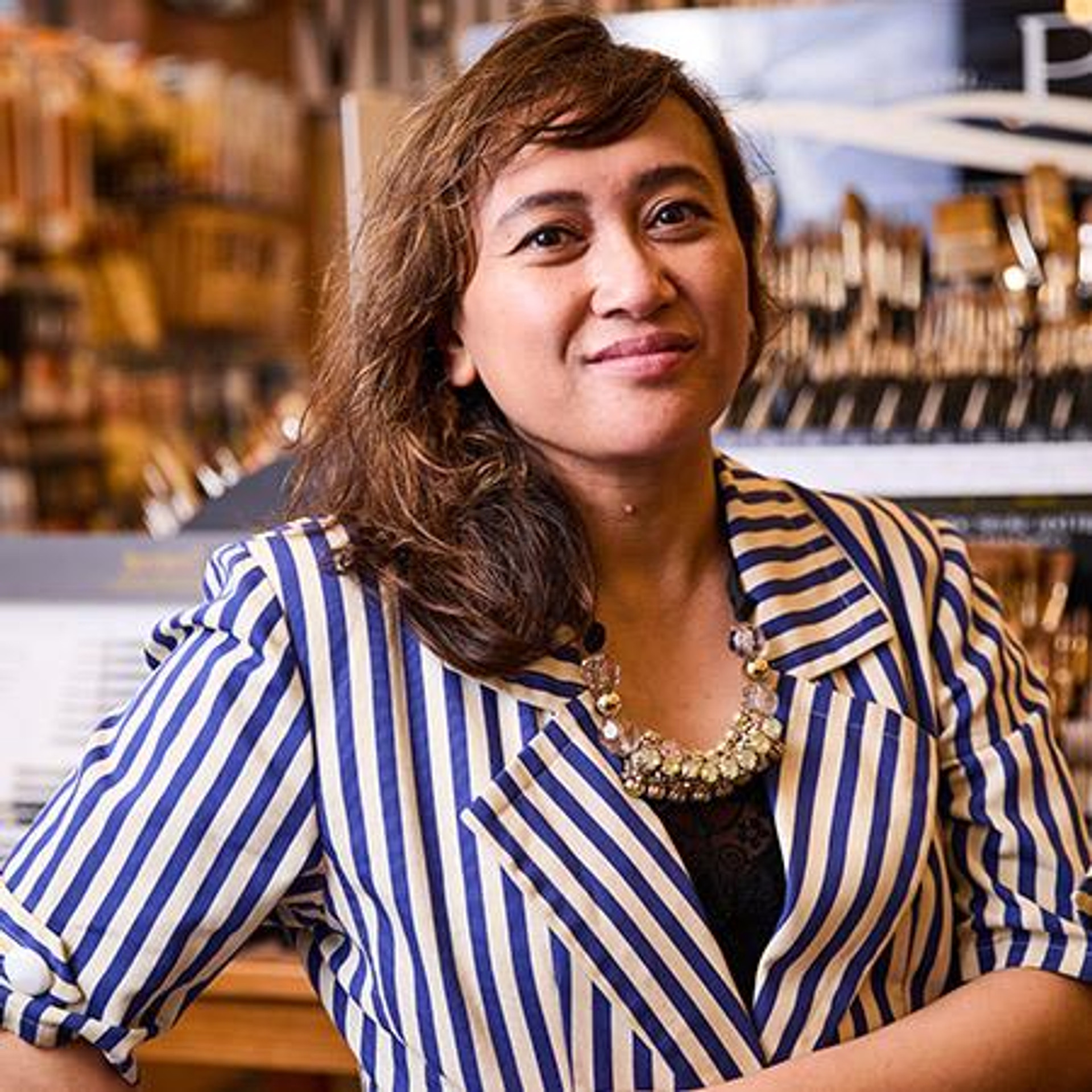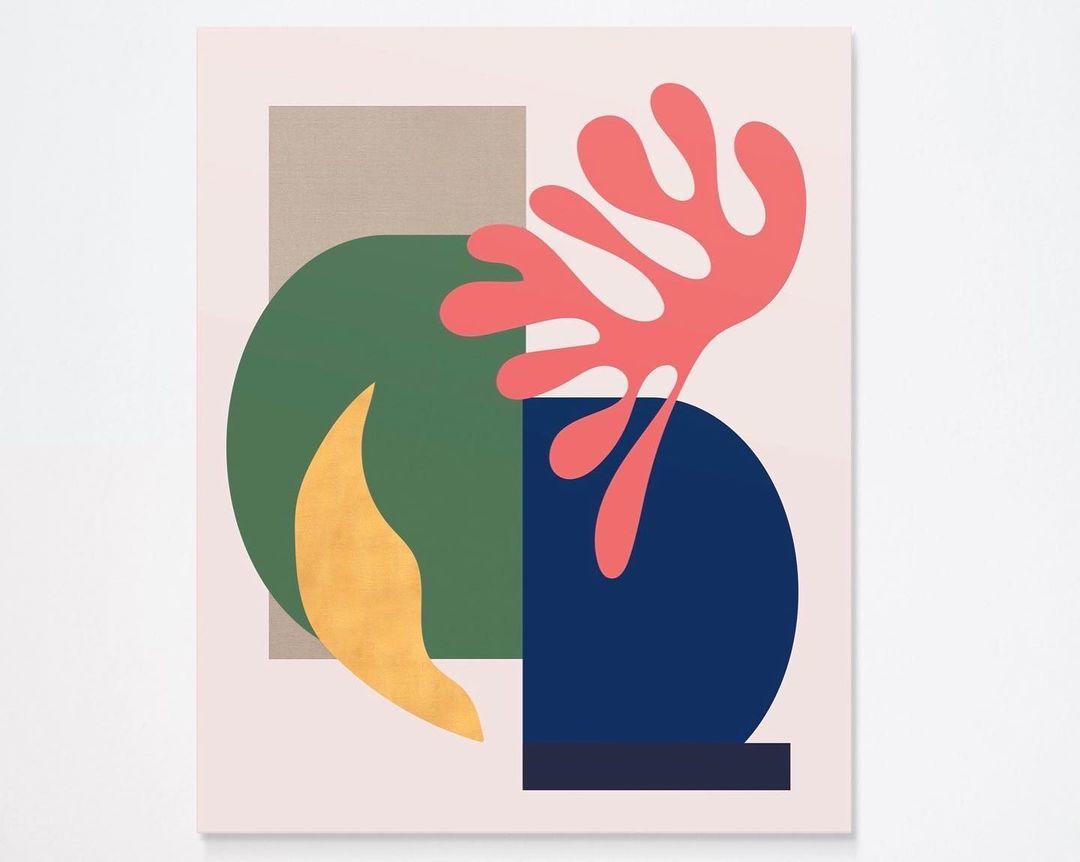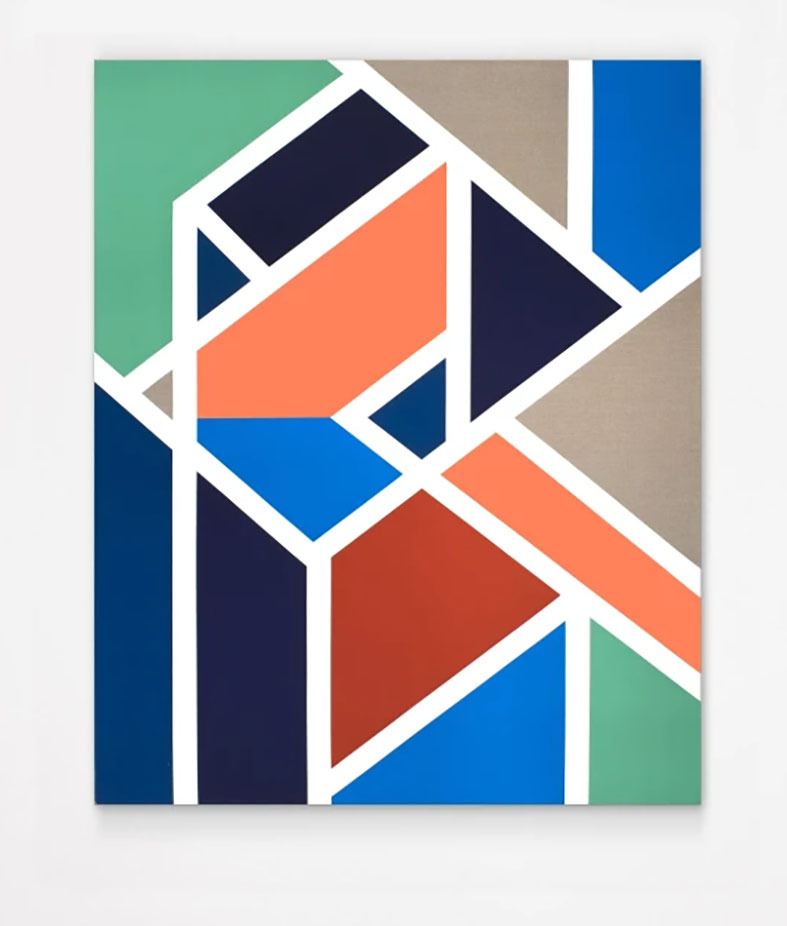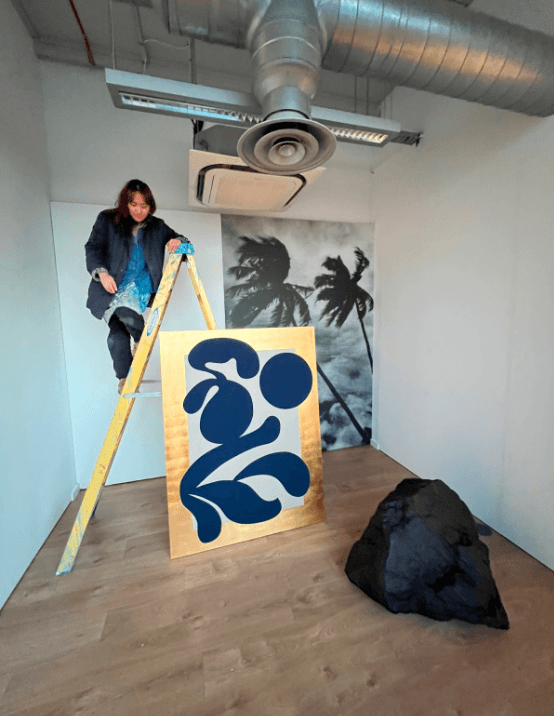
ARTIST
Sinta Tantra is a British artist of Balinese descent, Tantra spent her childhood in Indonesia, America and the UK where she studied at the Slade School of Fine Art and the Royal Academy Schools. Known for her colourful geometric paintings and site-specific murals, many in the public realm, Tantra’s work explores ‘painting on an architectural scale’.
The first recipient of the Bridget Riley Drawing Fellowship at the British School at Rome, previous commissions include The Contemporary Art Society, Folkestone Triennial, Karachi Biennale and Canary Wharf London. Tantra’s paintings are part of the UK Government Art Collection, MACAN Museum in Indonesia and Southeast Asia’s Louis Vuitton Collection.
Hi Sinta, thanks so much for speaking to us. Firstly, I'd love to start by talking about the early days of your artistic career. Was there any illuminating moment that made you want to be an artist?
Hi Ronan! Thanks for asking me to take part in the interview. I don't think I particularly had an illuminating moment; rather, it was a series of 'pat on the backs' I gave myself. I never thought I'd be an artist; I always thought I'd be more of a behind-the-scenes person like a producer or curator. Building self-confidence was, and still is, a lifelong challenge.
You're internationally renowned for your public artwork, where you explore the intersections of art, design, and architecture. How do you think our perception of art can change when it is presented in an urban environment?
At art school, I was inspired by Bauhaus ideals, art embedded into the everyday. How can painting overlap with architecture? I like how the shift in scale allows the viewer to become immersed in colour, form, and composition and become part of the painting itself as well as the fabric and energy of the city.

I recently heard you say in an exhibition, you try and incorporate the concept of time into a gallery space. Could you elaborate on this, and how do you go about achieving this?
When I develop a public artwork, whether a mural or sculpture, I need to study the natural light, where the sun sets and where the sun rises. Similarly, when I'm exhibiting in a gallery space, I want people to feel connected to the outside world and even the universe at large. I do this by creating vinyl installations on the windows, often in shades of pink, bathing the gallery and my paintings in a pink glow that changes throughout the day - bringing the concept of the outside inside.


Are there any artists or exhibitions you've been most inspired by these past 12 months?
So many! I love supporting younger female artists, especially Indonesian artists or artists of colour. One artist that I have been incredibly impressed by is Citra Sasmita who is Balinese and has exhibited in almost every biennale in the last twelve months and will (fingers crossed) have a major upcoming project in London in 2025. Her series of works, 'Timur Merah,' consists of female figures painted in the Kamasan style, a tradition often reserved for men. Her works frequently take the form of immersive hanging installations exploring and celebrating Balinese identity, female gender and sexuality.


What excites you most about being a judge for the Cass Art Prize? Is it the opportunity to discover new artistic talent or see a range of fresh perspectives on contemporary art?
I find inspiration in the work of younger artists. As someone in their forties, I'm aware how much the world has significantly transformed since my days art school - especially in the wake of movements such as #blacklivesmatter and #metoo. I'm eager to understand what younger artists are thinking, doing, and creating - and how my role as an older 'Auntie' can support them. By contrast, I'm also interested in people who didn't necessarily follow the typical route into art education - works from these artists excite me as they feel unique, unconventional and ‘outsider’. I’m sure we will get a huge range of entrants, from professionals to students, keen hobbyists and everything in between.

You have such a distinguished career as an artist. How has your artistic journey shaped how you approach judging emerging artists?
After graduating from the Royal Academy School in 2006, I completed a postgraduate diploma course in teaching and spent several years teaching in primary and secondary schools, universities and adult education. I love teaching a diverse range of learners, from people who know a little or a lot about art.
My teaching experience has encouraged me to realise that it's not about forcing people 'to be the best' - rather, it's about stepping into their shoes, seeing the world from their perspective and learning from them. I hope to bring some of this sentiment when I judge the award.
Thanks so much for your time, Sinta. Finally, if you had one piece of advice for any artists entering the competition, what would it be?
While it may sound cliche and not particularly art-related, it's critical to prioritise your mental and physical well-being. Investing time in self-care is crucial, even when you don't feel like it or don't want to. It's important to be open to the successes and failures of being an artist - it's an infinite cycle of learning, unlearning, and learning again. Even professional artists who may appear to ‘know’ what they are doing experience this internal cycle. Push the boundaries by all means, but, as my father always says, ‘make sure you enjoy yourself.'
FEELING INSPIRED?
Check out more of Sinta's incredible work on her website and be sure to follow her on Instagram.

